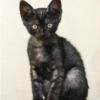CL and ISO
-
Recently Browsing 0 members
- No registered users viewing this page.
-
Similar Content
-
SL3 and ISO 200
By Dr. G,
- 9 replies
- 574 views
-
- 11 replies
- 976 views
-
- 7 replies
- 361 views
-
- 4 replies
- 210 views
-
Native base ISO 1 2
By Gavin Cato,
- 20 replies
- 2,922 views
-




Recommended Posts
Join the conversation
You can post now and register later. If you have an account, sign in now to post with your account.
Note: Your post will require moderator approval before it will be visible.